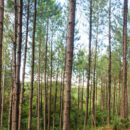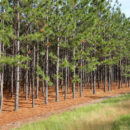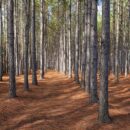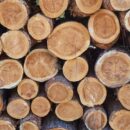FNC News
Maximize Your Timberland’s Potential: The Importance of Third Thinning
In previous Landowner News articles, we discussed the methodologies and importance of first and second time thinning. The first thinning involves removing every fifth row and thinning the remaining rows. The second thinning, which occurs five to seven years after the first thinning, is an improvement thinning to relieve stagnation. This allows the dominant, healthier pine to continue to grow, by removing suppressed, diseased and forked trees. Now, five to seven years after the second thinning, it’s time to consider the third thinning.
FNC foresters will conduct a field inspection to determine if the timber is stagnated and ready for this thinning operation. We will then outline our recommendations to the landowner and, if agreed upon, proceed with the timber sale process.
Similar to the second thinning, the third thinning is done to relieve stagnation and allow the dominant, healthier pine to continue to grow. During this harvest operation, small sawtimber will be removed. A tree will be left every thirty to forty feet, in anticipation of growing those trees into the sawtimber stage.
With a healthy pine stand, the third thinning will lead to a successful final harvest of good, quality sawtimber, in five to seven years.
The timber market in our area has held steady over the past several months. As with any agricultural crop, there will be spikes and lulls in the market. As FNC foresters, our goal is to help clients navigate the challenges of timber management and make their timberlands productive and profitable. Knowing when to market their timber can help in achieving and surpassing the client’s financial expectations.
Reach out to the FNC Forestry team today to ensure your timberland remains productive and profitable.
More News
Get in Touch




